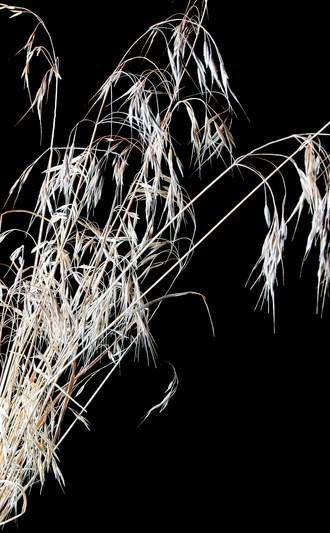Cheatgrass trouble for pets
Published 5:00 am Tuesday, August 3, 2010

- Cheatgrass is making its presence known among canines this year. Area veterinarians are seeing more dogs with the seeds getting caught in eyes and ears.
Cheatgrass — a nasty signature of the open West — is especially plentiful this summer, resulting in a high number of dogs needing emergency treatment in Central Oregon.
The invasive weed, which turns from soft and green in the spring to brittle, dirty blond in summer, appears in thick clusters off many roads and sidewalks. This summer, “it’s worse than we’ve seen before. Seeds are getting into dogs’ eyes, ears and throats. We’ve even found them in their lungs and tonsils,” said veterinarian Chad Moles, medical director of the Animal Emergency Center in Bend.
Trending
Roughly half of the center’s cases are cheatgrass-related, he said, far above average. To warn pet owners, Moles recently created newsletters and distributed them to local pet stores and veterinarian offices. It reads like the stuff of a Stephen King novel:
“The danger lies in the ‘invasiveness’ of the dry seed pods. These pods have one-way microscopic barbs that allow the seed to work its way into fur, skin and mucous membranes, but not work its way back out.”
Meg Samples, of Portland, and her basset hound Tube can attest to what can happen when one of those barbs makes its way into a dog’s body.
During a recent weekend visit to Bend, Tube ventured into a field off Century Drive. Basset hounds have short legs and long ears, a bad combination while moving through a spindly carpet of cheatgrass.
“He emerged with these tiny cockles sticking to his ears and stomach,” said Samples. “We weren’t about to let him into the car, so we sat next to the road and pulled them out, one by one.”
The next day, Tube kept tilting his head and pawing at his left ear. “Basset hounds’ eyes always look sad, but this time, they looked pitiful,” she said.
Trending
Using a flashlight, Samples, a registered nurse, discovered a tiny sharp-tipped seed embedded deep inside Tube’s ear canal. Because of her medical background, she was able to pull it out with tweezers, and then topped the infected area with a topical antibiotic ointment. (Do not try this on your own, she advised.)
While Moles and other veterinarians at the emergency center are removing lots of cheatgrass seeds from unhappy dogs’ ears and eyes, they’re also plucking them from between their toes. “Those tend to result in bacterial infections,” he said.
Why is this devilish plant so abundant this summer? Probably because of all the rainfall we had during the spring. The area experienced a higher level of precipitation than usual, according to National Weather Bureau data from Portland, and late May was particularly wet.
Cheatgrass favors Western rangeland and thrives on moisture in the spring, according to the U.S. Department of Agriculture website.
Once it dries out in midsummer, not only is it a menace to animals — including cats, rabbits and livestock — it crowds out native plants such as sagebrush and behaves like tinder in a fire, according to the agency.
Cheatgrass tips
Here are some tips from the Animal Emergency Center and the American Veterinary Medical Association to keep cheatgrass from getting under your pet’s skin, or worse, deep inside the ear canal:
• Keep your pet’s coat clean and well-groomed.
• Keep pets out of dry, grassy fields and roadsides.
• Pull weeds from your pet’s outdoor area in the yard.
• Inspect your pet often for hair mats (where cheatgrass likes to hide) and between toes.
• Clip the hair between paw pads in dogs to reduce potential for picking up cheatgrass.
• Check with your veterinarian any time your pet is excessively sneezing, drooling, shaking its head, scratching ears, whining, or licking at a paw or other body part.








